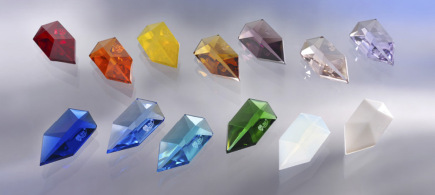At the glassworks, the secondary raw material is melted down and used, amongst other things, for the production of new glass packaging and containers. Afterwards, the Recycling symbol – which comprises 3 arrows – and which reflects the recycling program used. For the three we’ve already discussed, we have the following Recycling codes for different colours of glass– 70 GL for colourless, 71 GL for green and 72 GL for brown glass.
We now get, for example, new glass packaging in industry, but containing not only used glass containers – waste glass and industrial specialty glasses also end up in recycled glass. Thus, in the end, recycled glass ends up back with the end users -and the materials cycle begins all over again.
Interesting facts
Every bottle is made out of approx. 75% recycled glass, and with some colours, this is closer to 90 %. Glass is 100 % recyclable. Glass is such that it can be melted down as often as you like, and thereby processed into new high quality glass packaging over and over again. There is no quality loss as a result. This cannot be said for any other packaging material. Because of this, the recycling process makes an enormous contribution towards protecting the environment. This material cycle helps to save not only raw materials, but energy, landfill space and time too. To ensure the cycle is sustained, use of the correct disposal method is crucial. In Germany, around 97 % of households already contribute towards the success of such environmentally-friendly processes. In this country, at the present time, about 2 million tonnes of waste glass are collected each year. Every German citizen therefore collects about 25 kg waste glass per year, according to this calculation.
Waste glass at Schafer Glass
This waste glass material comes not only from previously used glass containers, but also from industries and businesses. Here in our company for example, the broken edges and scraps from the production process for glass lenses, glass beads, reflectors and other products from our various ranges that have been marked or scratched are included (see From concept to finished product Section 3). We collect this excess glass as well as glass fragments and defective products in a glass skip, and thus make a significant contribution towards protecting the environment.
More detailed information: What goes into recycled glass –Glass Industry Federation

